Whether you’re in school, learning a language, picking up a new skill, or just looking to stay sharp, educational apps make it easier to learn anytime, anywhere. From tools that help with homework and study planning to apps for language learning, science practice, or creative skills, there’s something for every type of learner.
At ReciMe, we focus on helping people stay organized in the kitchen, but we know that structure matters in every area of life including education. That’s why we built a tool that lets you collect recipes from social platforms, create grocery lists sorted by aisle, and plan meals with ease. If learning is on your mind, eating well should be too. Download ReciMe now and then let’s explore the top educational apps of the year!

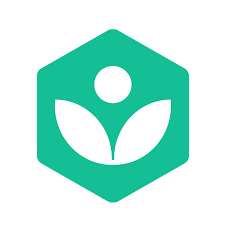
1. Khan Academy
Khan Academy is an educational app that provides access to a large library of instructional materials, including videos, articles, and practice exercises. The content covers subjects such as mathematics, science, economics, finance, grammar, history, government, and computer science. Users can browse and interact with learning materials through a structured interface, and the app includes tools that allow users to revisit topics or track what they’ve already viewed.
The app includes options to save content for offline use and synchronize progress across devices when an account is created. While some features from the main website such as programming courses, test prep, and community discussions are not included in the app, the mobile version maintains a wide selection of educational content. Language availability is varied, and usage does not require payment or subscriptions.
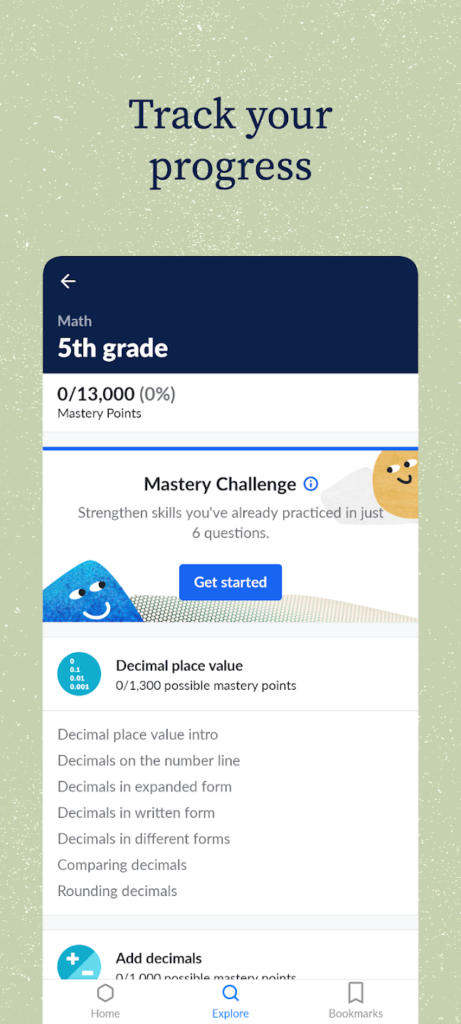
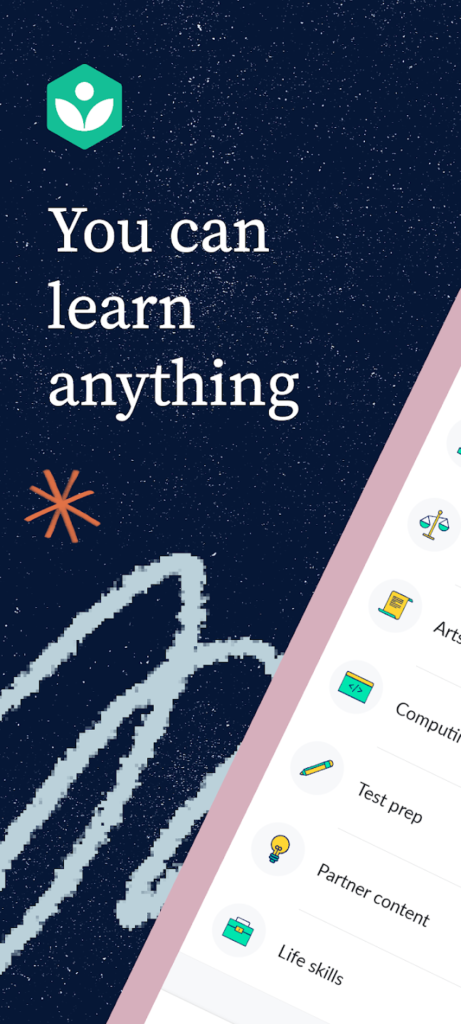

Key Highlights:
- Video, article, and quiz-based content across subjects
- Option to download selected materials for offline viewing
- Account-based progress tracking
- Structured layout with categorized topics
- App version focuses on core learning resources
Who it’s best for:
- Individuals using mobile devices for academic subjects
- Users seeking structured topic overviews
- Learners who revisit material over time
- Those accessing educational content without desktop use
Contact Information:
- App store: apps.apple.com/us/app/khan-academy
- Google Play: play.google.com/store/apps
- Website: www.khanacademy.org
- Facebook: www.facebook.com/khanacademy
- Twitter: twitter.com/khanacademy
- Instagram: instagram.com/khanacademy
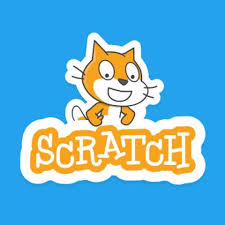
2. Scratch
Scratch is an educational app developed by the Scratch Foundation that allows users to create interactive stories, animations, and games using a visual programming interface. The app includes tools for selecting or creating characters, backgrounds, and sounds. Projects can be saved locally and shared with others through export features or the official Scratch website when logged into an account.
The app can be used without an internet connection and is available on iOS and Android devices, with web-based access for other platforms. Scratch offers external links to tutorials and educator resources for those using the platform in a classroom setting. While some features available on the website may not be included in the mobile or desktop app versions, the core environment for project creation is maintained across platforms.
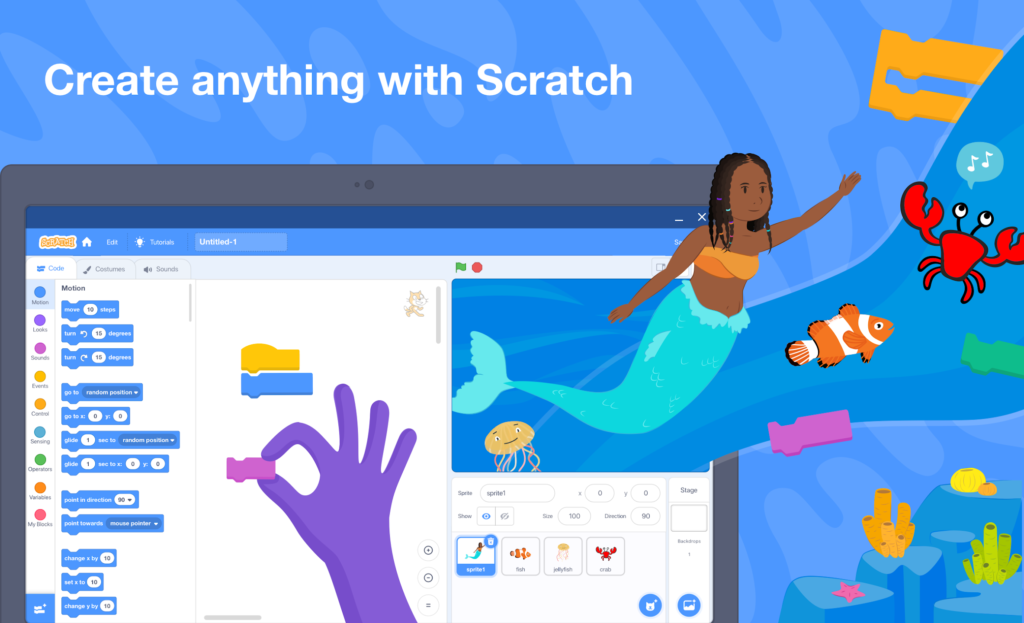
Key Highlights:
- Visual programming interface for project creation
- Tools for editing characters, sounds, and backgrounds
- Local project saving with offline functionality
- External device connection options supported
- Web-based sharing and account sync available separately
Who it’s best for:
- Users interested in block-based programming
- Educators incorporating visual coding in classrooms
- Beginners exploring interactive digital creation
- Learners using Scratch-compatible physical devices
Contact Information:
- Google Play: play.google.com/store/apps
- App store: apps.apple.com/us/app/scratchjr
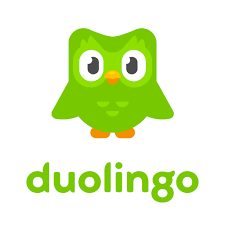
3. Duolingo
Duolingo is a language-learning app that offers structured lessons in multiple languages through short, interactive exercises. The app includes activities focused on reading, writing, listening, and speaking. Users progress through thematic units, completing tasks that involve translation, matching, and pronunciation. A path-based layout guides users through content at a set or self-paced rhythm.
Language options range from widely spoken global languages to fictional ones. Features such as daily progress tracking and personalized lesson paths are part of the experience. While the app includes advertising and optional in-app purchases, its base functionality remains accessible without payment. The platform is available on both Android and iOS, with options to sync usage across devices when signed in.
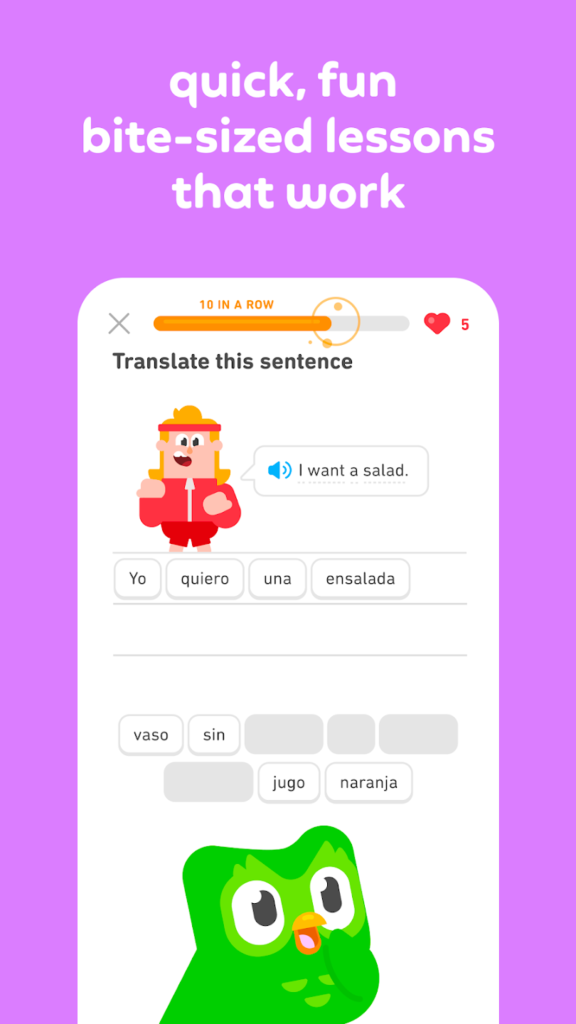
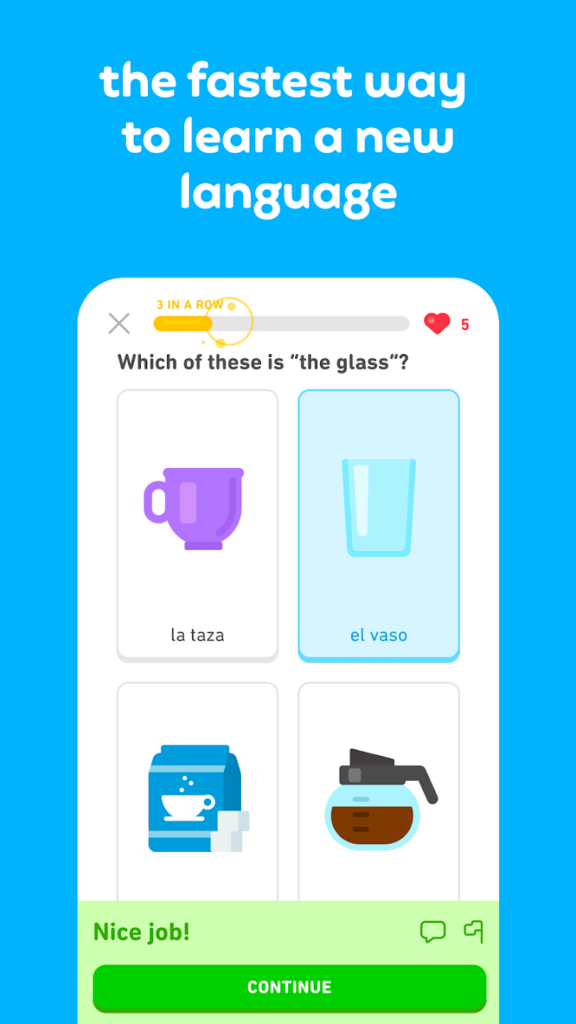
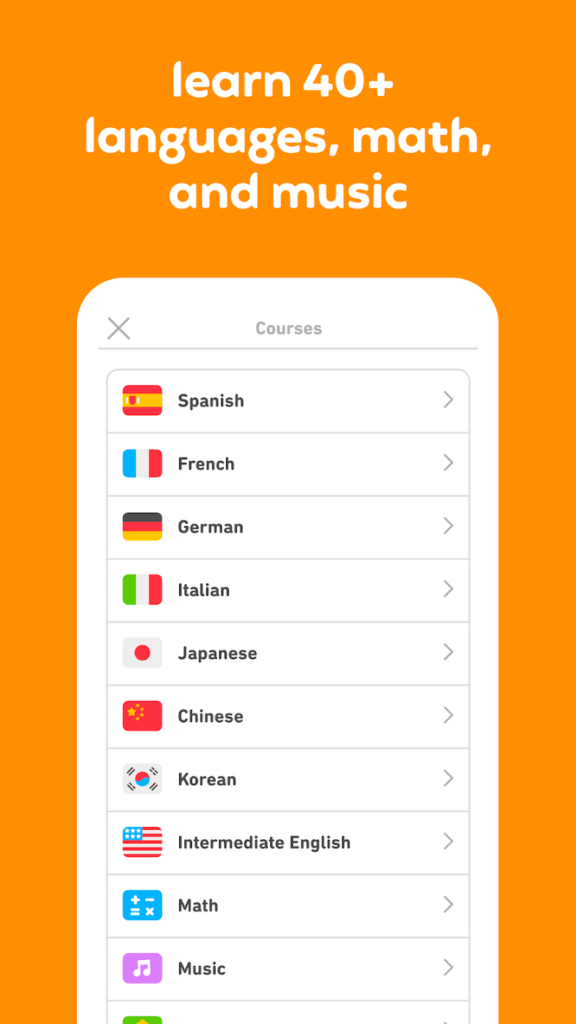
Key Highlights:
- Language exercises organized by skill type and theme
- Content available in dozens of languages
- Path-based structure with interactive lessons
- Optional sign-in for progress tracking
- In-app purchases and advertising included
Who it’s best for:
- Users interested in basic or intermediate language practice
- People using mobile apps for routine study
- Learners exploring multiple languages from a single platform
- Individuals combining casual learning with structured repetition
Contact Information:
- Website: www.duolingo.com
- App store: apps.apple.com/app/duolingo-language-lessons
- Google Play: play.google.com/store/apps/details
- Facebook: www.facebook.com/duolingo
- Instagram: www.instagram.com/duolingo
- Twitter: twitter.com/duolingo
- LinkedIn: www.linkedin.com/company/duolingo
- YouTube: www.youtube.com/user/duolingo
- TikTok: www.tiktok.com/@duolingo
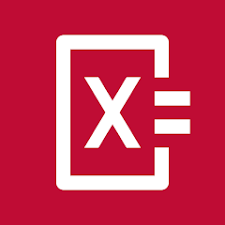
4. Photomath
Photomath is a mobile app that allows users to scan printed or handwritten math problems using their device’s camera. The app then displays a step-by-step breakdown of the solution. Users can also input equations manually through an integrated calculator. In addition to standard problem solving, the app presents alternate solving methods and includes support for various math topics ranging from arithmetic to calculus and statistics.
The app interface includes interactive graphs and explanations tied to each step of a solution. Photomath supports multiple languages and can be used with or without account registration. While some features are available without cost, additional tools may require in-app purchases. The app is available for Android and iOS platforms and updates regularly to maintain compatibility with new devices.
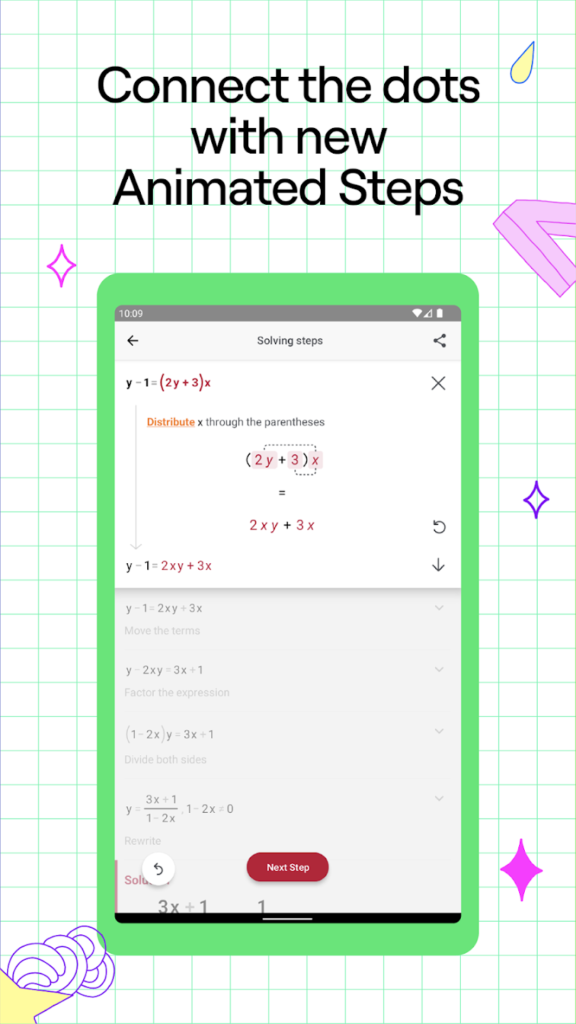
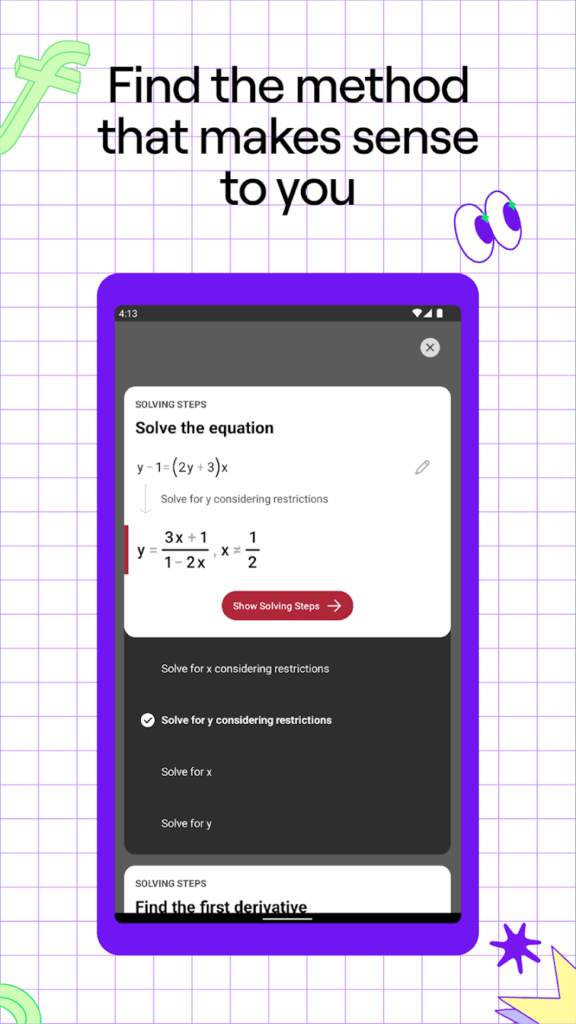
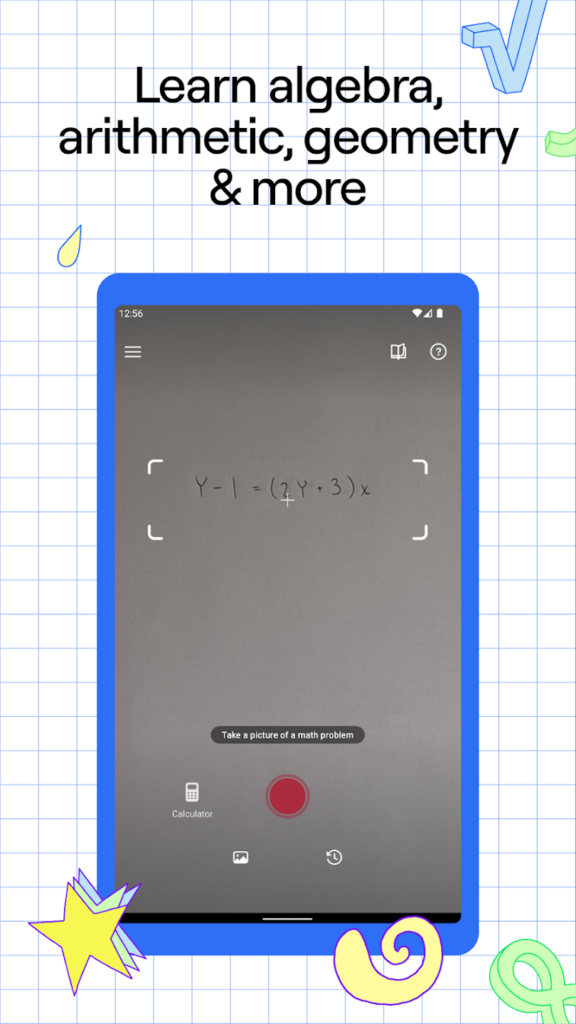
Key Highlights:
- Camera-based scanning of math problems
- Manual input via calculator interface
- Step-by-step solution display
- Includes graphs for visual explanations
- Covers a wide range of math topics
Who it’s best for:
- Users checking math homework or exam prep
- Individuals reviewing problem-solving methods
- Learners working through math concepts independently
- Students studying math topics across different levels
Contact Information:
- App store: apps.apple.com/us/app/photomath
- Google Play: play.google.com/store/apps
- Website: www.photomath.com
- Tik-Tok: www.tiktok.com/@photomath
- Instagram: www.instagram.com/photomath
- Twitter: twitter.com/photomath
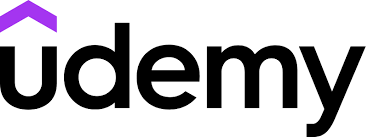
5. Udemy
Udemy is an educational app that provides access to a wide catalog of online video courses across technical, creative, and professional topics. Course content is organized by subject area, and users can explore materials in programming, business, personal development, design, marketing, and other categories. The app supports multiple languages and includes interface options for video playback, offline access, and user interaction.
Users can set up reminders, take notes, and save bookmarks while viewing content. Some courses offer tests and question sections, allowing users to engage with instructors and other learners. Course updates may vary by instructor. While some content is free, many courses require a one-time purchase. Certificates of completion are available for select paid courses. The app runs on Android and iOS, including support for Chromecast and AirPlay on compatible devices.
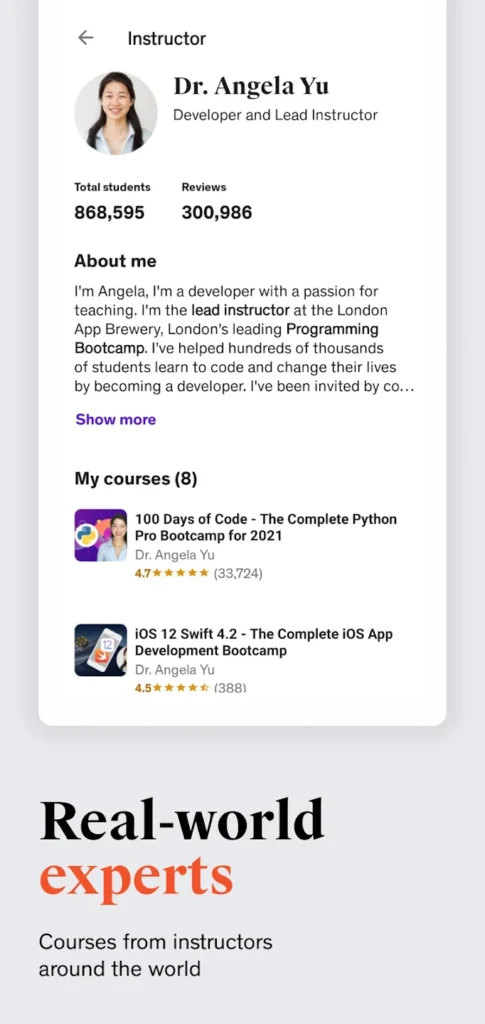
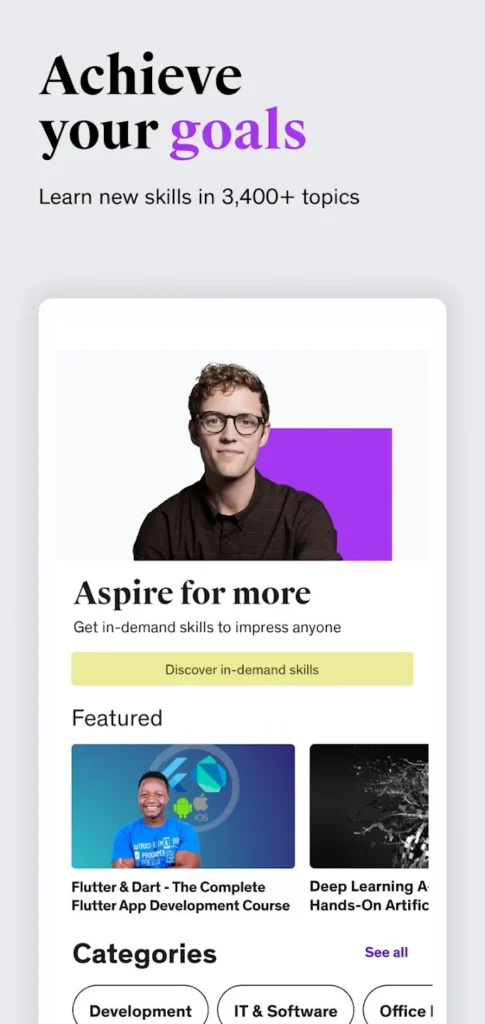

Key Highlights:
- On-demand access to subject-based video courses
- Features for offline downloads and note-taking
- Option to submit questions to course instructors
- Multilingual interface and course availability
- Includes one-time purchase model for paid content
Who it’s best for:
- Users looking for non-degree learning formats
- Individuals exploring specific professional or creative skills
- Learners using mobile or tablet devices for flexible study
- Those seeking structured video lessons with instructor support
Contact Information:
- App store: apps.apple.com/us/app/udemy-online-video-courses
- Google Play: play.google.com/store/apps
- Website: www.udemy.com
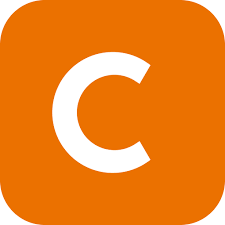
6. Chegg Study
Chegg Study is an educational app that provides access to study resources across various academic subjects. It includes a searchable library of solved homework questions, flashcards, and topic explanations. Users can scan printed or handwritten problems and receive step-by-step solutions. The app supports content across disciplines such as mathematics, physics, chemistry, engineering, and language studies.
In addition to its content library, the app offers an expert Q&A feature where users can submit questions and receive written explanations. The platform also integrates AI-supported tools for selected problems. Access to some features requires a paid subscription. The app is available for Android and iOS and includes functionality for viewing past sessions and saving personal materials like flashcards.
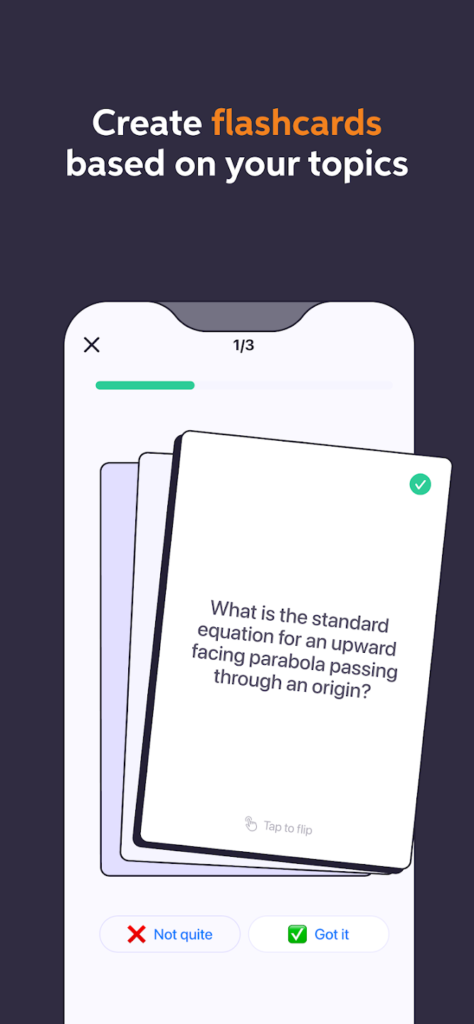
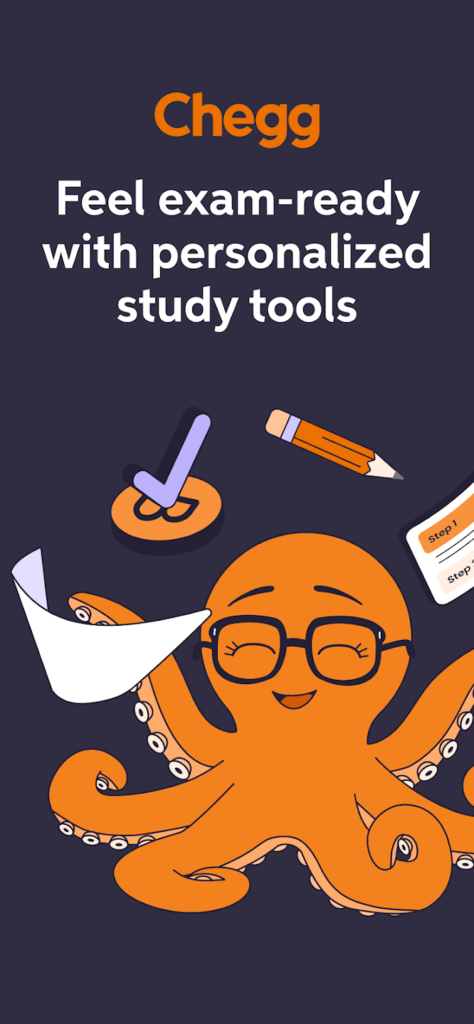
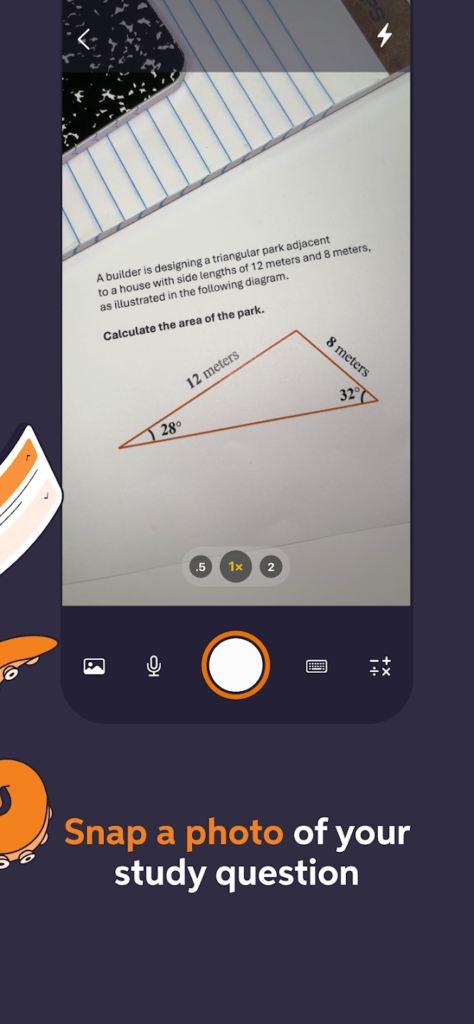
Key Highlights:
- Library of solved academic questions
- Option to scan and submit questions
- Subject coverage includes STEM and humanities
- Tools for creating and storing flashcards
- Subscription-based access to full content and expert responses
Who it’s best for:
- Students looking for guided explanations of specific problems
- Users preparing for exams in school or college
- Individuals using mobile tools for homework support
- Learners accessing topic summaries and study cards
Contact Information:
- App store: apps.apple.com/us/app/chegg-study-homework-help
- Google Play: play.google.com/store/apps
- Website: www.chegg.com
- Facebook: www.facebook.com/chegg
- Instagram: www.instagram.com/chegg
- Twitter: x.com/Chegg

7. WolframAlpha
WolframAlpha is an educational tool that processes user queries using a computational knowledge engine. The app allows input of problems and questions across subjects such as mathematics, physics, chemistry, astronomy, and engineering. Users can enter queries through text or by uploading images of math expressions, and the system generates computed results or step-based outputs depending on query type and subscription level.
The app’s interface supports domain-specific searches, input assistance for formulas or equations, and structured output for problem-solving. Some features, including step-by-step solutions and image-based input, are only available through a paid subscription. WolframAlpha is available for Android and iOS devices and is used in contexts such as homework checking, self-study, or general inquiry across academic and technical fields.
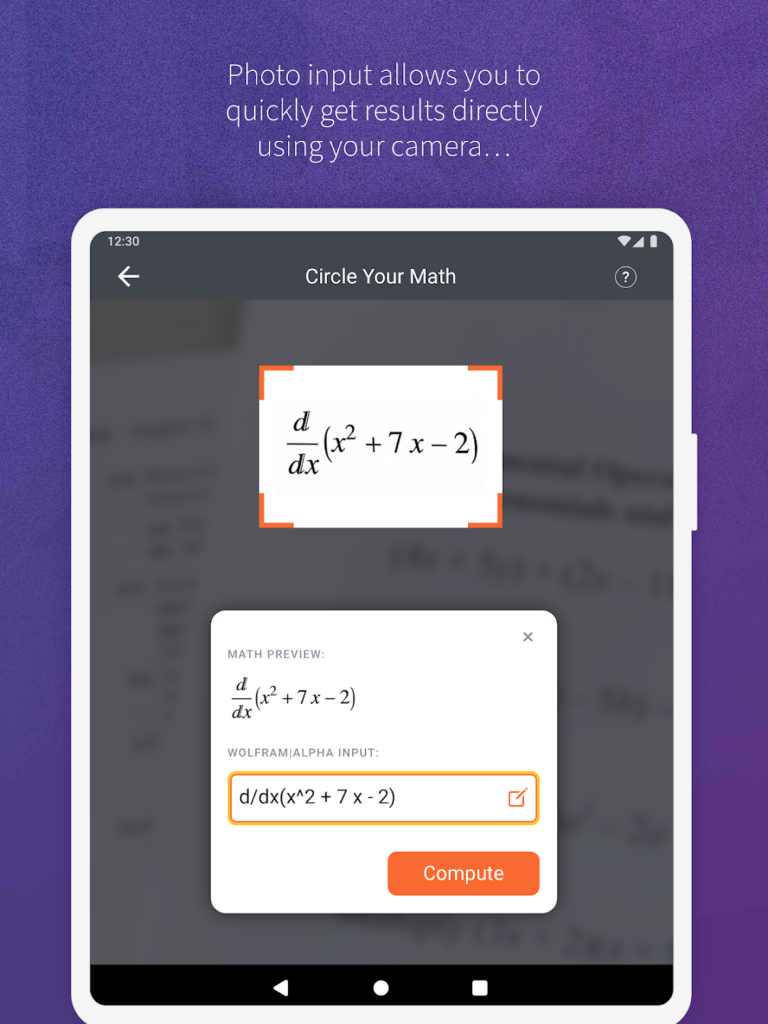
Key Highlights:
- Computational query engine for academic subjects
- Supports both typed and image-based input
- Step-based outputs available for select queries
- Subject coverage includes STEM, economics, and statistics
- Subscription model for access to additional tools
Who it’s best for:
- Students using problem-solving apps for math or science
- Users working with equation-heavy subjects
- Individuals seeking computed answers for academic tasks
- Learners familiar with structured or formula-based input
Contact Information:
- App store: apps.apple.com/us/app/wolframalpha
- Google Play: play.google.com/store/apps
- Website: products.wolframalpha.com
- Facebook: www.facebook.com/OfficialWolframAlpha
- Instagram: www.instagram.com/officialwolframalpha
- LinkedIn: www.linkedin.com/company/373905
- Twitter: twitter.com/Wolfram_Alpha
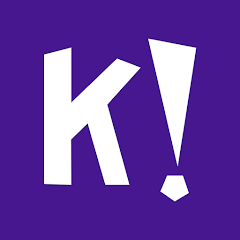
8. Kahoot!
Kahoot! is an application that enables users to create and take part in quiz-style activities known as “kahoots.” These quizzes can be built using various formats such as multiple-choice, true/false, polls, or image-based questions. The app supports both live-hosted games and self-paced sessions. It is used in educational, domestic, and corporate settings, and includes access to templates, visual themes, and question-type customization.
Participants can join games via mobile devices, computers, or video conferencing tools. Users have options to create their own content or search through existing public quizzes. Kahoot! also includes tools for progress tracking, report generation, and collaborative quiz participation. A subscription unlocks access to additional features and content libraries, depending on user type.
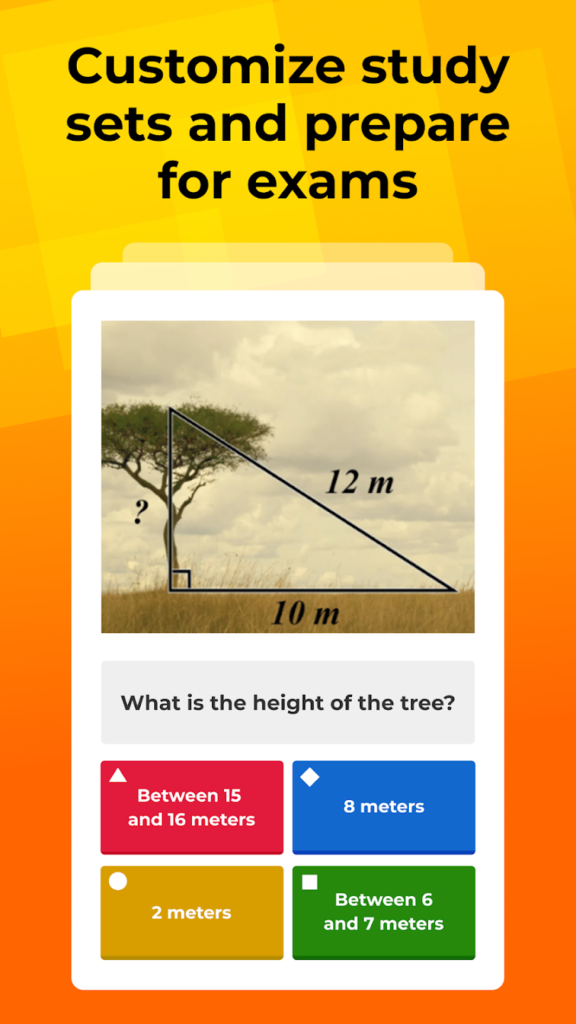
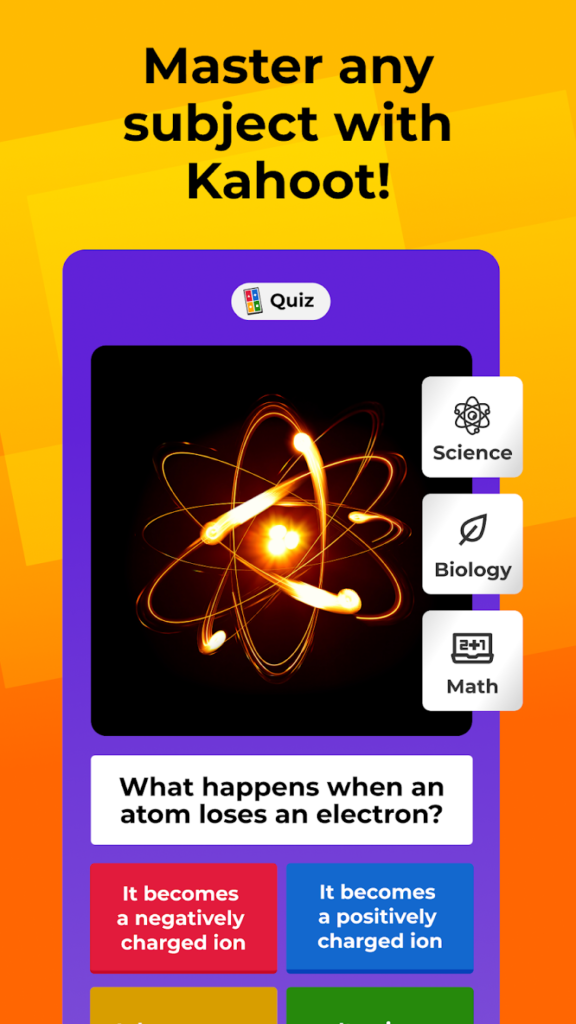
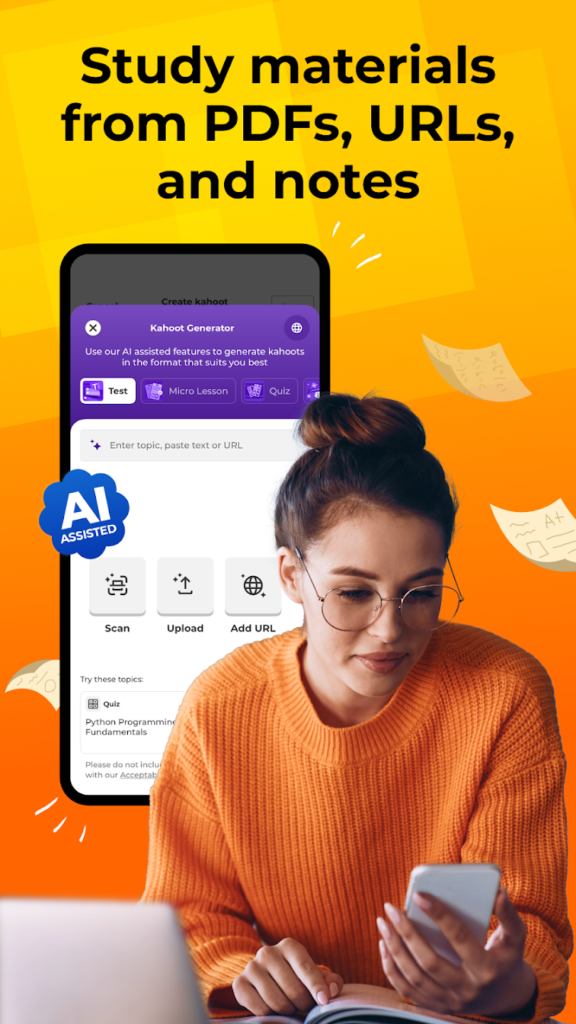
Key Highlights:
- Interface supports both live-hosted and self-paced quizzes
- Question formats include multiple choice, polls, and open-ended input
- Available in over 20 languages including Ukrainian, Arabic, and Simplified Chinese
- Content can be shared across classrooms, teams, or households
- Subscription model for advanced editing and presentation features
Who it’s best for:
- Students participating in classroom quizzes or study sessions
- Teachers managing interactive lessons or content review
- Families using game-based tools for shared learning
- Workplace teams incorporating quizzes into training or presentations
Contact Information:
- App store: apps.apple.com/us/app/kahoot-play-create-quizzes
- Google Play: play.google.com/store/apps
- Website: kahoot.com
- Twitter: x.com/kahoot
- Facebook: www.facebook.com/getkahoot
- LinkedIn: www.linkedin.com/company/kahoot
- Instagram: www.instagram.com/kahoot
- Tik-Tok: www.tiktok.com/@kahoot
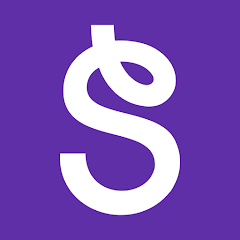
9. Seesaw
Seesaw is an educational platform developed for use in early-grade classrooms. It provides tools for teachers to assign activities, gather student responses, and organize portfolios. Students can complete tasks using features like drawing, voice recording, and photo submission. Completed work is stored in digital folders, allowing teachers and families to view student progress over time.
The platform includes messaging functions for communication between teachers and families. Messages can be translated into multiple languages, and progress reports can be shared through the app. Seesaw also supports class presentations and activity differentiation using student groups. It is available on Android and iOS, and is used both in U.S. schools and internationally.
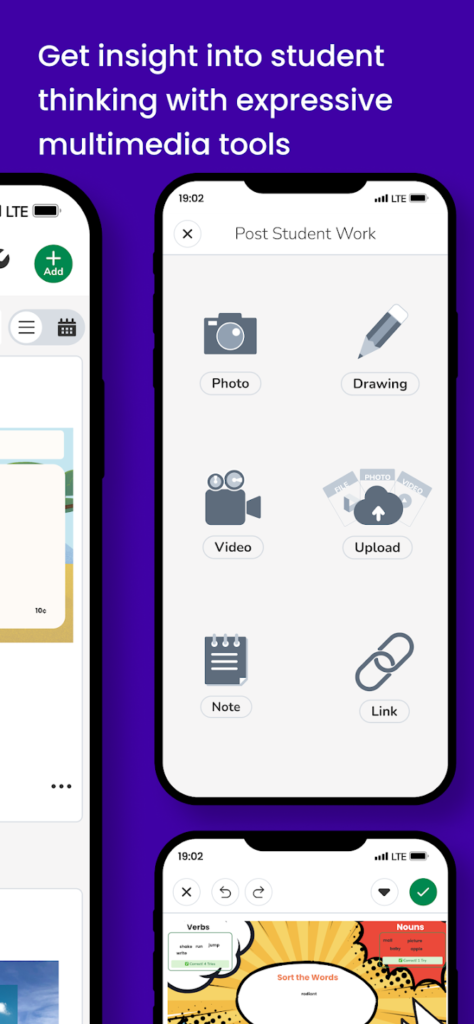

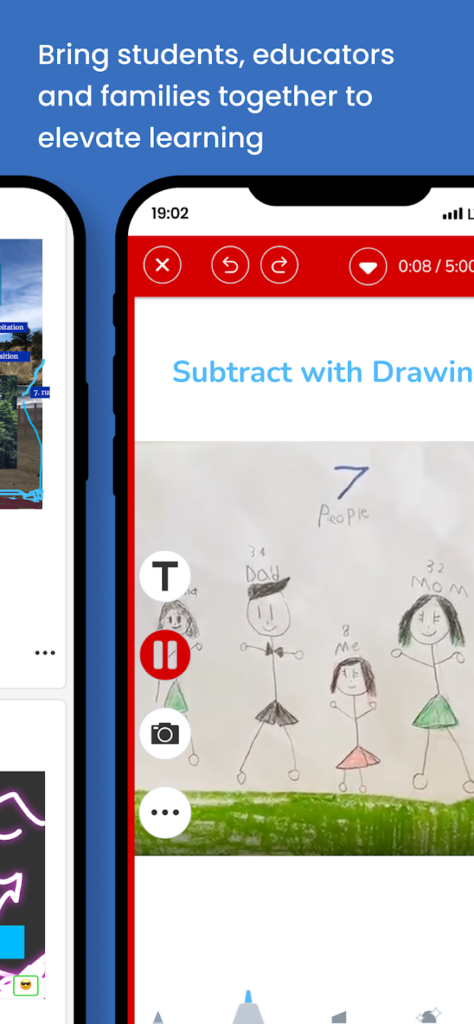
Key Highlights:
- Activity creation and student portfolio organization
- Multiple input methods including drawing, voice, and photo
- Two-way communication with translation into over 100 languages
- Includes ready-to-use educational content and templates
- Family access to student work and progress reports
Who it’s best for:
- Teachers managing assignments and classroom communication
- Students in early-grade classrooms completing multimedia tasks
- Families viewing classroom activity and updates
- Schools using tools for student progress documentation and messaging
Contact Information:
- App store: apps.apple.com/us/app/seesaw
- Google Play: play.google.com/store/apps
- Website: seesaw.com
- Twitter: twitter.com/seesaw
- Pinterest: www.pinterest.com/SeesawEdu
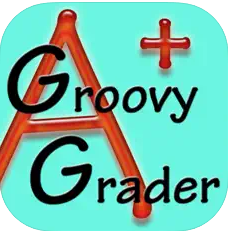
10. Groovy Grader
Groovy Grader is a digital grading calculator designed for educators. The app replaces traditional paper-based slide graders by allowing teachers to input the total number of questions and view corresponding grades. It can display grades as whole numbers or with one decimal place and offers the option to show the number of correct and incorrect responses simultaneously.
The app interface is structured to display up to 50 or more grade values on screen at once. Users can configure settings such as screen dimming and scrolling behavior for quicker reference. Groovy Grader is available for iPhone, iPad, and iPod Touch, with a Pro version that removes ads and expands on-screen grade visibility.
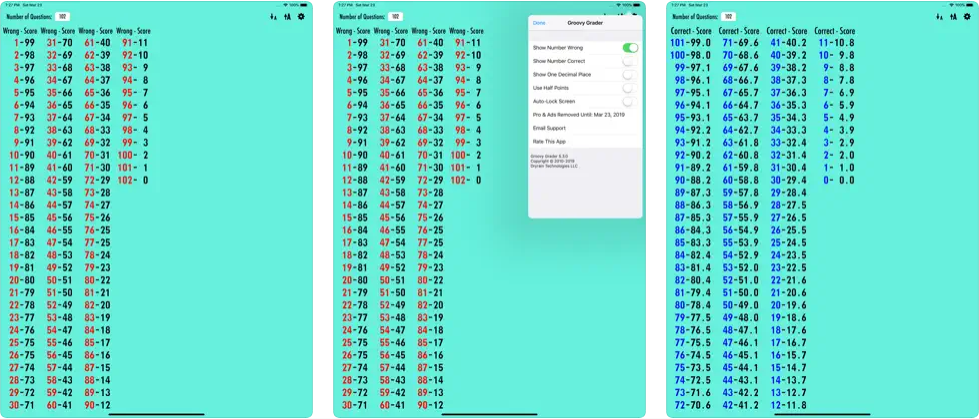
Key Highlights:
- Digital alternative to paper slide grading tools
- Displays correct, incorrect, or both grading metrics
- Adjustable decimal and whole number formats
- Optimized for viewing multiple grade rows at once
- Pro version includes expanded features and ad-free use
Who it’s best for:
- Teachers seeking quick reference grading tools
- Educators grading high volumes of assignments or tests
- Users looking for compact digital grading calculators
- Individuals who prefer manual input over automated LMS systems
Contact Information:
- App store: apps.apple.com/us/app/groovy-grader
- Website: dryraintechnologies.com
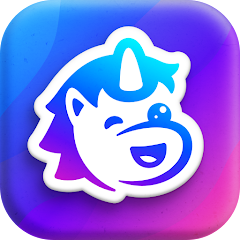
11. Klassly
Klassly is a communication platform developed for use in school settings. It allows teachers to manage classroom interactions and share updates with students’ families. The app supports features such as homework tracking, event scheduling, chat tools, file sharing, and attendance logging. Teachers can create posts with photos, documents, polls, and requests, while also managing private or group discussions.
Families can respond to teacher posts, request communication, and access shared content. Some features, such as downloading photos or engaging in parent-to-parent chats, may require a paid plan. The app includes translation support and tools for creating photo books or yearbooks. It operates under privacy policies that comply with FERPA and GDPR standards.
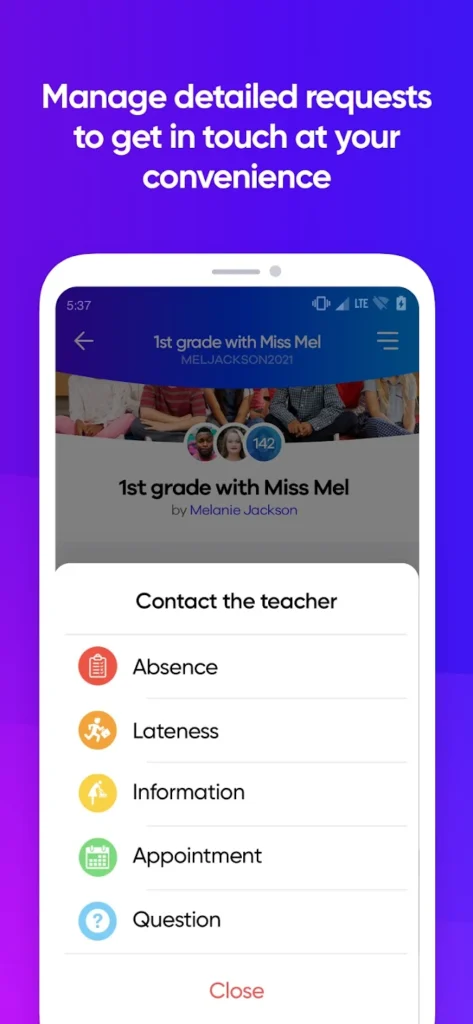
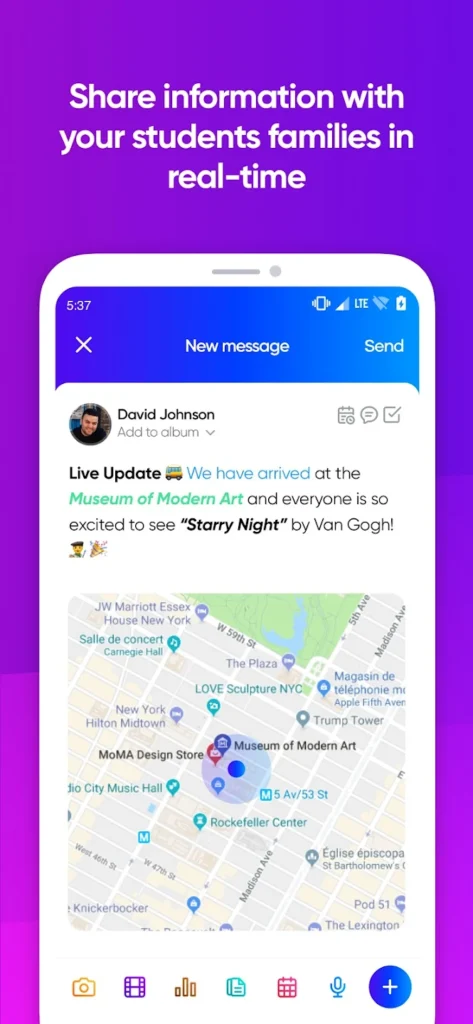
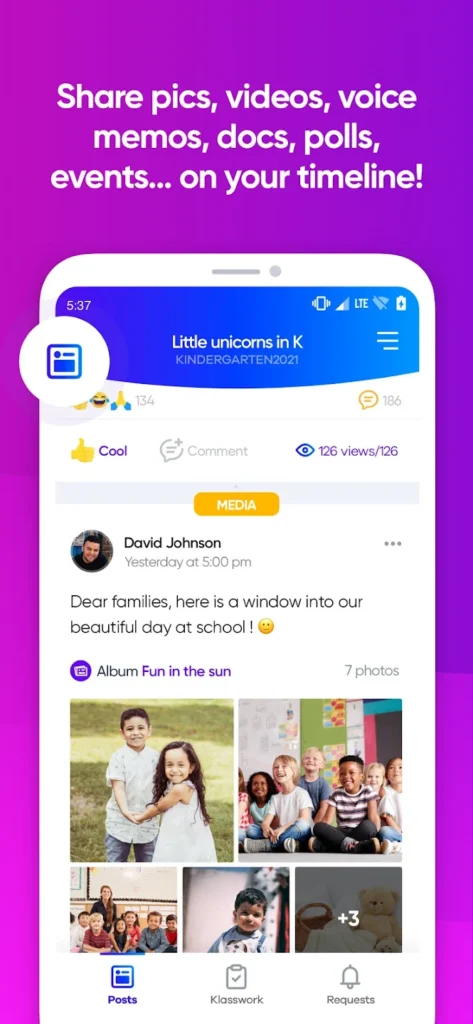
Key Highlights:
- Available on iOS and Android
- Offers tools for classroom communication and coordination
- Includes chat, calendar, file sharing, and translation options
- Designed with social-media-style navigation
- Supports optional in-app purchases for extended access
Who it’s best for:
- Teachers managing classroom updates and parent interaction
- Schools looking for digital tools to structure home-school communication
- Parents seeking centralized access to school posts and schedules
- Users preferring mobile access to classroom tools without external platforms
Contact Information:
- App store: apps.apple.com/us/app/klassly
- Google Play: play.google.com/store/apps

12. Additio App
Additio App is a classroom management tool developed for teachers. It combines grading, planning, and communication features into a single platform. Users can manage assessments, create lesson plans, organize schedules, and access custom templates. The app is accessible via web, tablets, and mobile devices, with options for syncing data between them.
The app integrates with services like Google Classroom, Microsoft for Education, and Moodle, offering import/export functionality. Teachers can also generate reports, communicate with families and students, and use features offline. Several plans are available, including options for individual teachers and school-wide implementations with administrative dashboards and reporting tools.
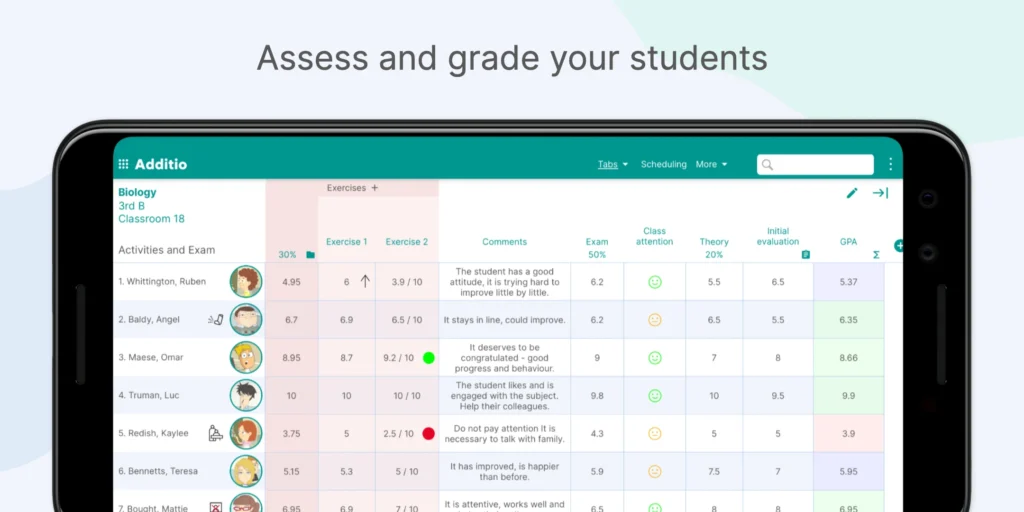
Key Highlights:
- Digital gradebook and curriculum planning tools
- Access available on mobile, tablet, and web
- Device sync and offline support
- Report and rubric generation options
- Integrations with external LMS platforms
Who it’s best for:
- Teachers handling assessment, planning, and classroom data
- Schools seeking centralized tools for classroom management
- Educators using blended learning environments
- Users working across multiple devices or platforms
Contact Information:
- Google Play: play.google.com/store/apps
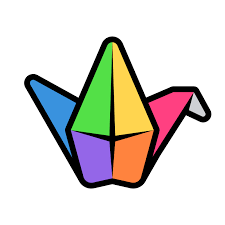
13. Padlet
Padlet is a cross-platform app used for creating and managing visual boards. It allows users to collect and display various types of content including text, images, videos, and files. These boards can be configured in multiple formats, such as grids, timelines, or maps, and are accessible via mobile, tablet, or desktop.
The app supports collaborative features like commenting, reactions, and editing by multiple users. It includes tools for organizing classroom materials, brainstorming ideas, or sharing resources in a structured format. Padlet is used in a range of settings, including education, work meetings, and creative projects. Some functionality requires a paid subscription.
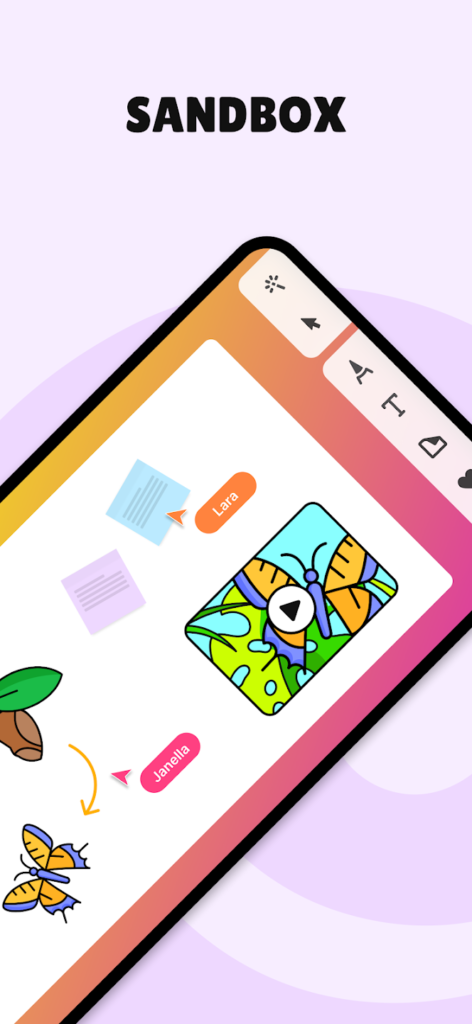
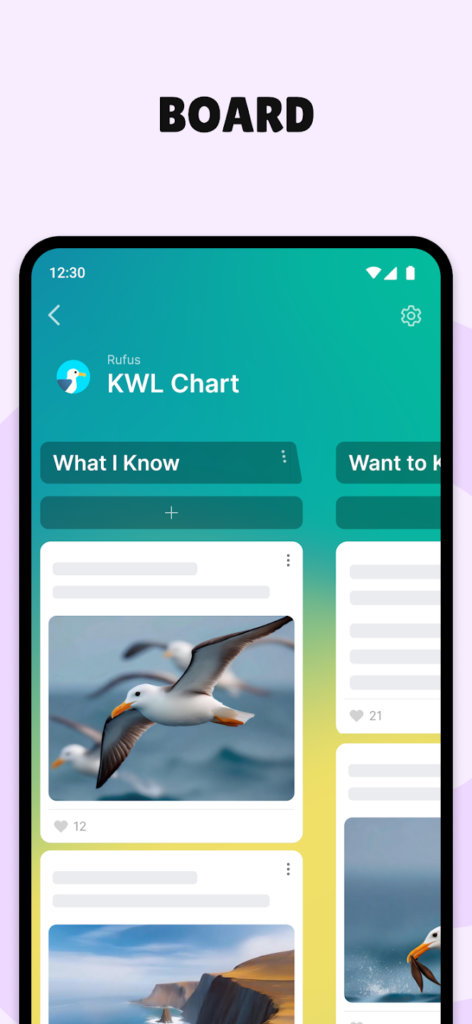
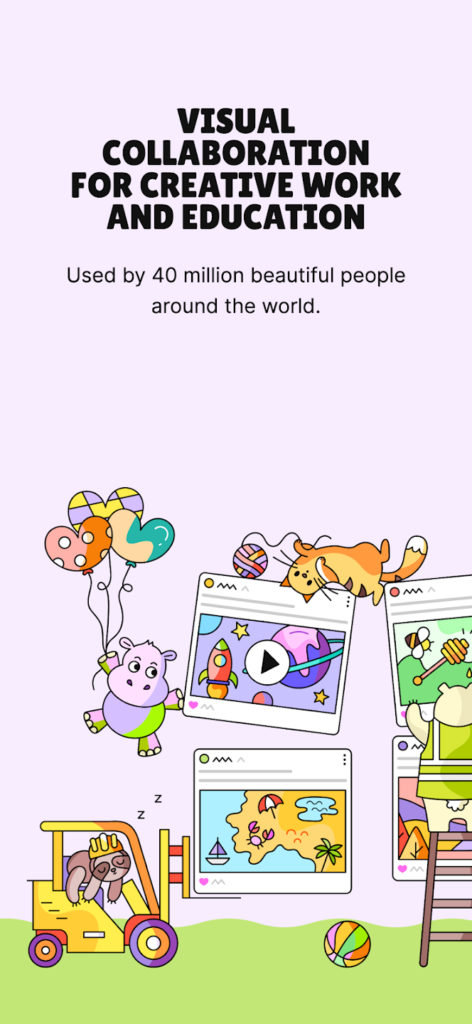
Key Highlights:
- Multiple board formats including timeline, wall, and canvas
- Supports mixed media: text, images, video, links, and files
- Real-time collaboration and sharing options
- Content organization through grouping and sorting
- Available on Android, iOS, and web
Who it’s best for:
- Educators managing visual and collaborative materials
- Teams working on shared presentations or resources
- Students collecting ideas and working on projects
- Users seeking a visual layout for personal or professional notes
Contact Information:
- App store: apps.apple.com/us/app/padlet
- Google Play: play.google.com/store/apps
- Website: padlet.com
- Twitter: twitter.com/padlet
- YouTube: www.youtube.com/@padlet
- Facebook: www.facebook.com/padlet
- Instagram: www.instagram.com/padlet
- LinkedIn: www.linkedin.com/company/padlet

14. Lingokids
Lingokids is an educational app created for early learners. It provides access to interactive content such as games, songs, and video-based activities in English. The material is grouped into categories like reading, math, science, technology, and social-emotional development. The app is available on iOS and Android, with language support across multiple regions.
Users can navigate lessons by subject or skill area, and view content organized around themes such as literacy, creativity, or physical activity. The app includes a parental section for tracking usage and accessing learning reports. It supports up to four child profiles per account and offers both online and offline access. Some parts of the platform are subscription-based.



Key Highlights:
- Educational games and media content for ages 2 to 8
- Coverage includes STEM, language, music, and soft skills
- Multi-profile support with progress tracking tools
- Operates on both Android and iOS systems
- Available in several interface languages
Who it’s best for:
- Parents of preschool or early elementary-age children
- Families interested in early English-language exposure
- Caregivers looking for app-based learning content
- Users seeking structured activities for young children
Contact Information:
- App store: apps.apple.com/us/app/lingokids-play-and-learn
- Google Play: play.google.com/store/apps
- Website: lingokids.com
- Tik-Tok: www.tiktok.com/@lingokids
- YouTube: www.youtube.com/channel/UCTl
- Facebook: www.facebook.com/Lingokids
- Instagram: www.instagram.com/lingokids
- LinkedIn: www.linkedin.com/company/lingokids
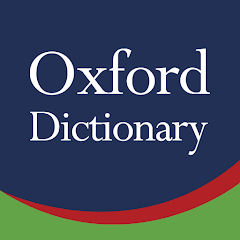
15. Oxford Dictionary & Thesaurus
The Oxford Learner’s Dictionaries app offers a comprehensive language resource with dictionary and thesaurus features. It includes dictionaries in multiple languages, such as English, Spanish, French, Russian, Chinese, and more. The app features a lot of words, phrases, and definitions, making it an invaluable tool for anyone seeking accurate and reliable language reference.
Users can benefit from advanced search tools, including fuzzy search, voice search, and camera search. The app also integrates a thesaurus, providing synonyms and antonyms, as well as phrases and topic-specific content. The “Word of the Day” feature helps users expand their vocabulary daily. A premium subscription unlocks additional features, such as audio pronunciation and offline access.

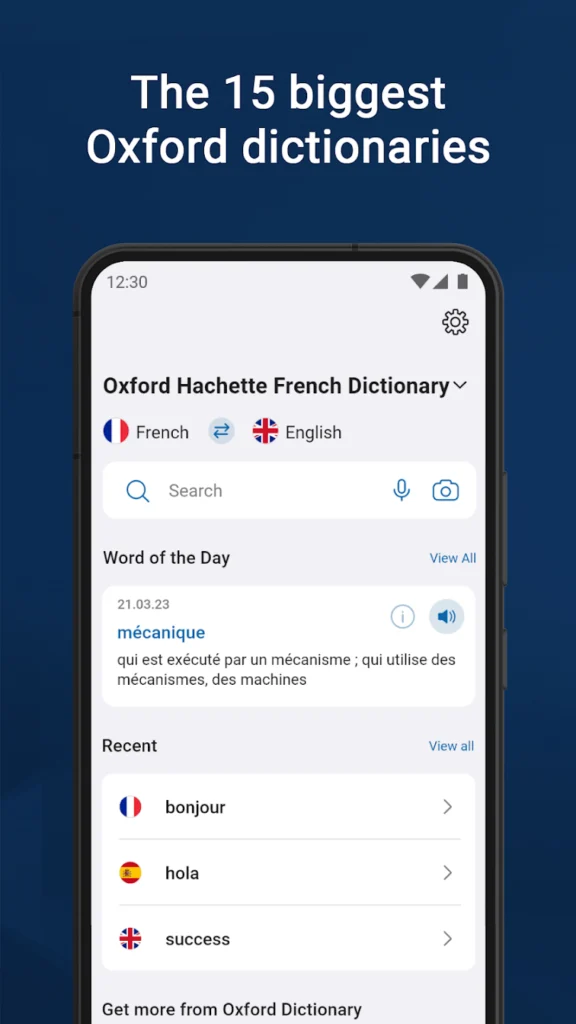
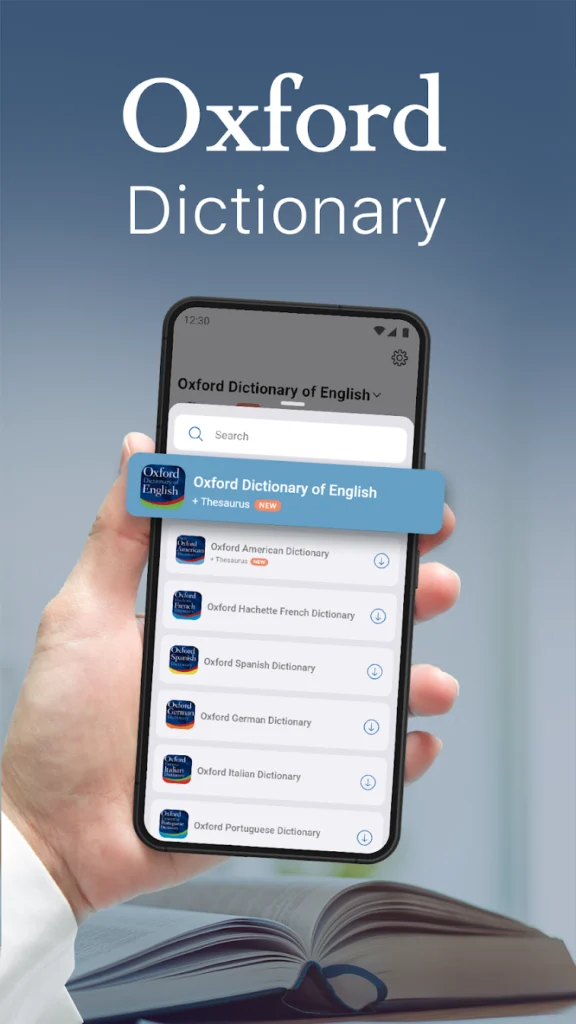
Key Highlights:
- A lot of words, phrases, and definitions
- Advanced search tools including voice and fuzzy search
- Thesaurus integration with thousands of synonyms and antonyms
- “Word of the Day” feature for daily vocabulary expansion
Who it’s best for:
- Language professionals and students
- People preparing for language proficiency exams like IELTS, TOEFL, or SAT
- Individuals seeking a reliable and comprehensive language reference
- Users looking for a robust thesaurus and pronunciation guide
Contact Information:
- Google Play: play.google.com/store/apps

16. myHomework Student Planner
myHomework Student Planner is an intuitive and user-friendly application designed to help students organize their academic life. It allows users to track homework, assignments, tests, and classes with ease. The app offers a beautiful calendar display and supports time, block, and period-based schedules, making it suitable for high school, college, and middle school students.
The free version provides basic features, while a premium account offers additional functionalities, such as unlimited themes, the ability to upload photos and files for assignments, and an ad-free experience. The app also supports cross-platform syncing, allowing users to stay organized across multiple devices, including phones, tablets, and a website.
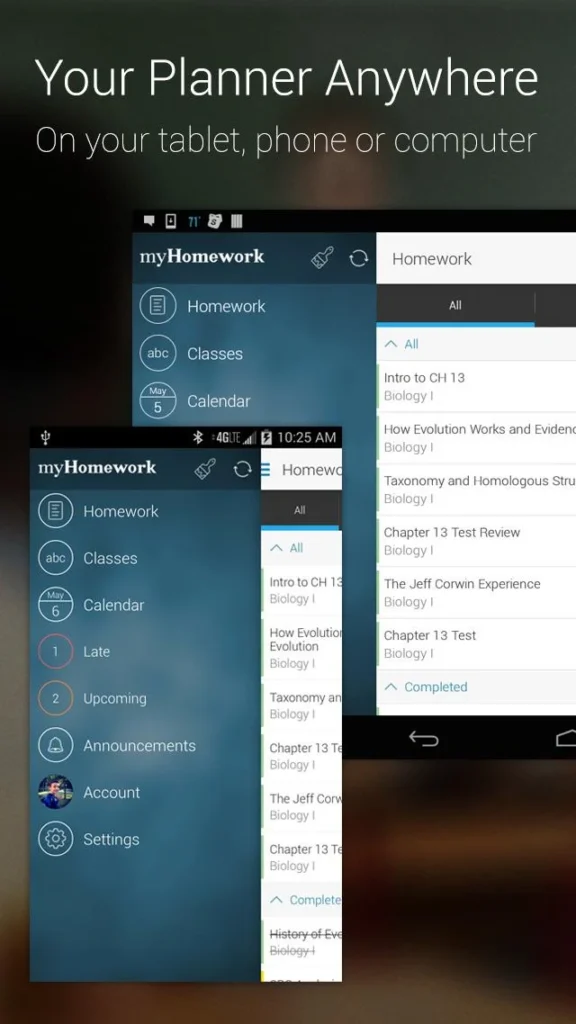
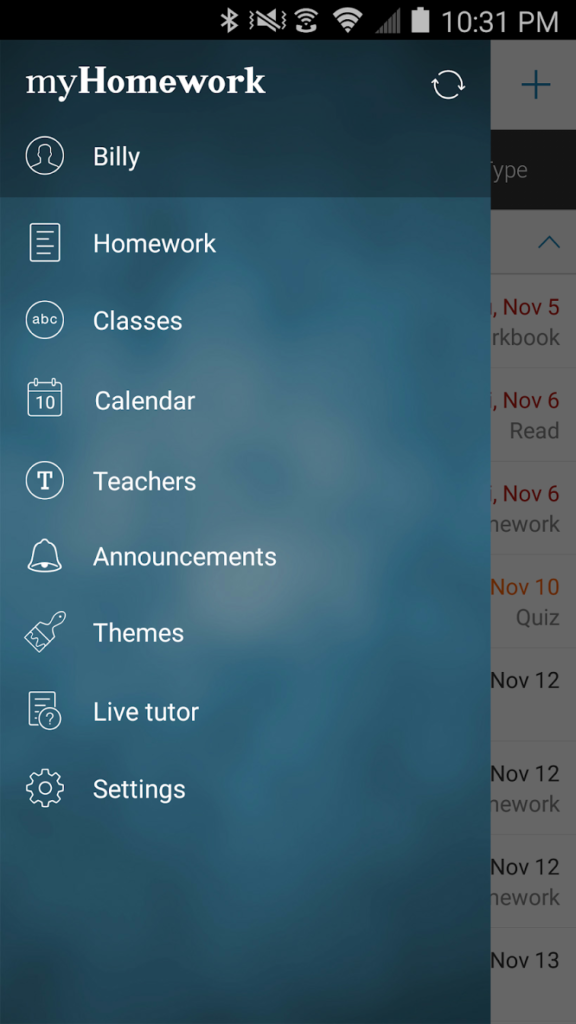
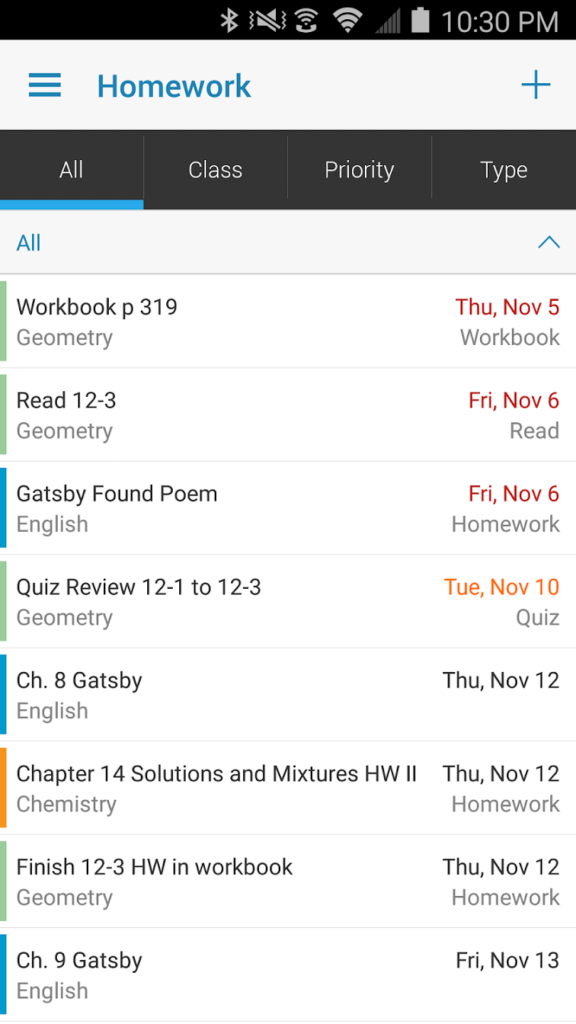
Key Highlights:
- Track homework, tests, and assignments
- Beautiful calendar display with customizable themes
- Cross-platform syncing across multiple devices
- Reminders and due date notifications
- Free version with premium upgrade options
Who it’s best for:
- High school, middle school, and college students
- Individuals looking for a simple and effective academic planner
- Students with block class schedules
- Those who want a seamless, cross-device academic organization tool
Contact Information:
- App store: apps.apple.com/us/app/myhomework-student-planner
- Google Play: play.google.com/store/apps
- Website: myhomeworkapp.com
- Facebook: facebook.com/myhomeworkapp
- Twitter: twitter.com/myhomeworkapp

17. SimpleMind – Mind Mapping
SimpleMind is a versatile mind mapping application designed to help users organize their thoughts, generate ideas, and improve creativity. The app provides an intuitive interface that allows for easy creation of mind maps with unlimited elements and a flexible layout. It can be used for a variety of purposes, including business, education, legal, and medical applications.
The free version of SimpleMind includes essential mind mapping tools, such as free-form layout, auto-layout for brainstorming, and options for adding media like images, notes, and voice memos. Users can upgrade to the premium version for additional features like cloud synchronization, premium themes, and the ability to upload files.
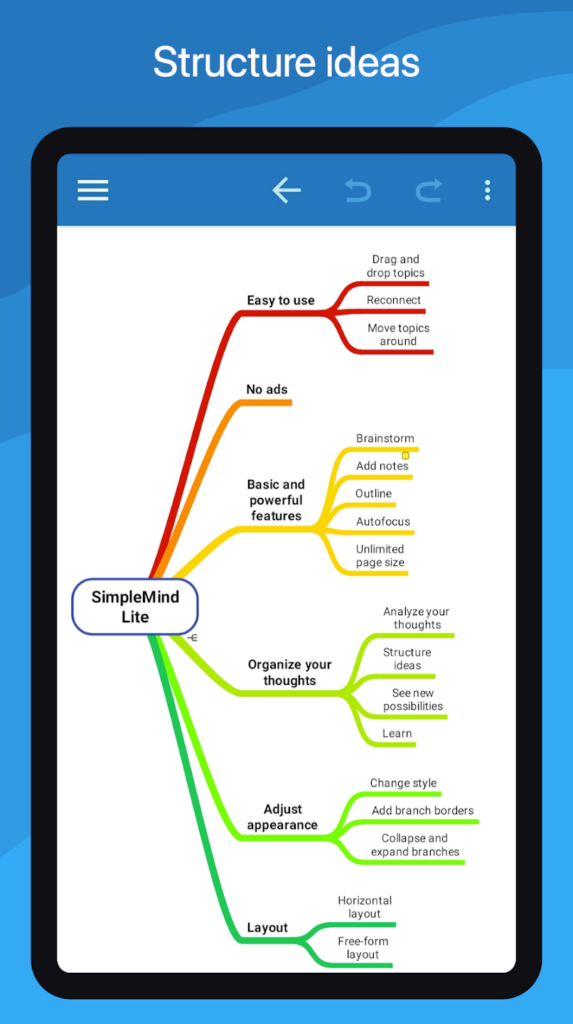
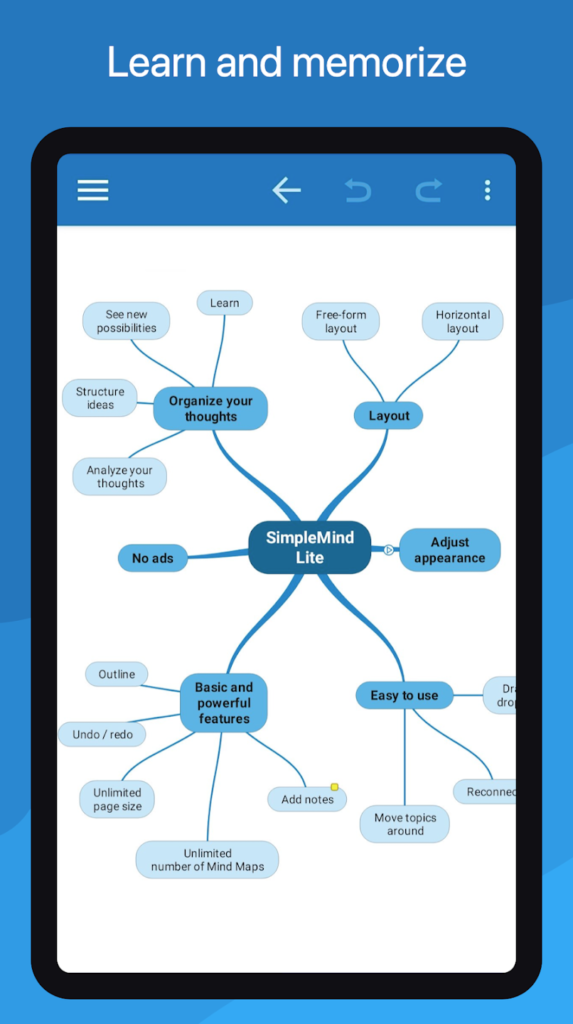
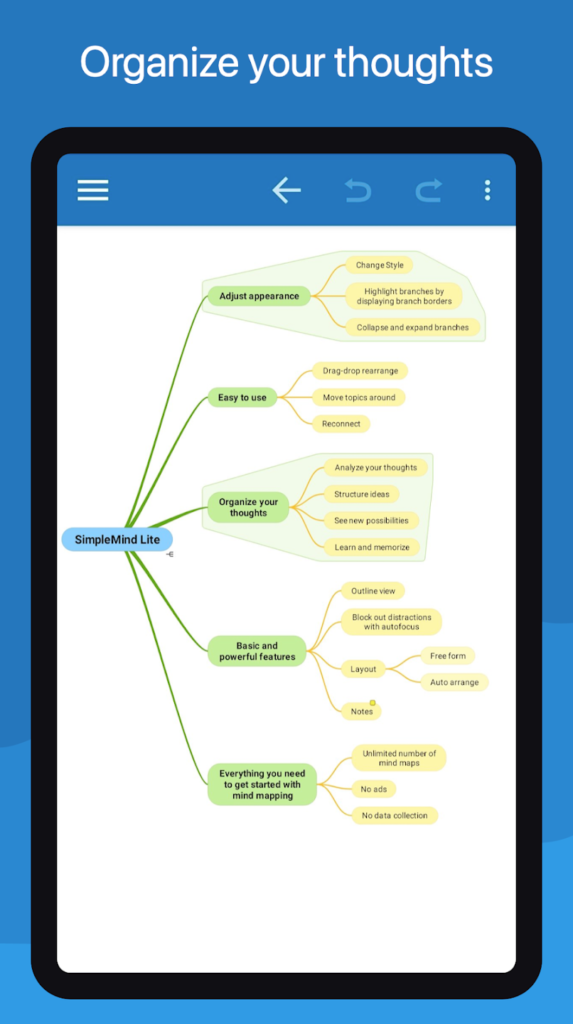
Key Highlights:
- Create unlimited mind maps with customizable layouts
- Add media, notes, checkboxes, progress bars, and links
- Sync across platforms (iOS, Android, Mac)
- Export mind maps as PDFs or images
- Free version available with essential features
Who it’s best for:
- Students, professionals, and creatives looking to organize thoughts
- Individuals who want an intuitive, easy-to-use mind mapping tool
- Users looking for an app that offers both free and premium features for extensive functionality
- Those in need of cross-platform synchronization for mind maps
Contact Information:
- App store: apps.apple.com/us/app/simplemind-mind-mapping
- Google Play: play.google.com/store/apps
- Website: simplemind.eu
- YouTube: www.youtube.com/SimpleMindApp

18. Quizlet: Study with Flashcards
Quizlet is a popular educational app designed to help students of all ages learn and memorize information efficiently. Users can create their own flashcards or choose from millions of pre-made sets to study a wide range of subjects. Quizlet offers various features to enhance the learning experience, including customizable flashcards, practice questions, and mock exams to prepare for tests. With its user-friendly interface and smart algorithms, Quizlet adapts to individual learning needs and tracks progress.
The app supports various learning modes, such as flashcards, written responses, multiple-choice questions, and audio quizzes. Quizlet’s premium version unlocks additional features, including offline access, AI-powered study assistance, and ad-free experiences, making it an excellent tool for students preparing for exams.
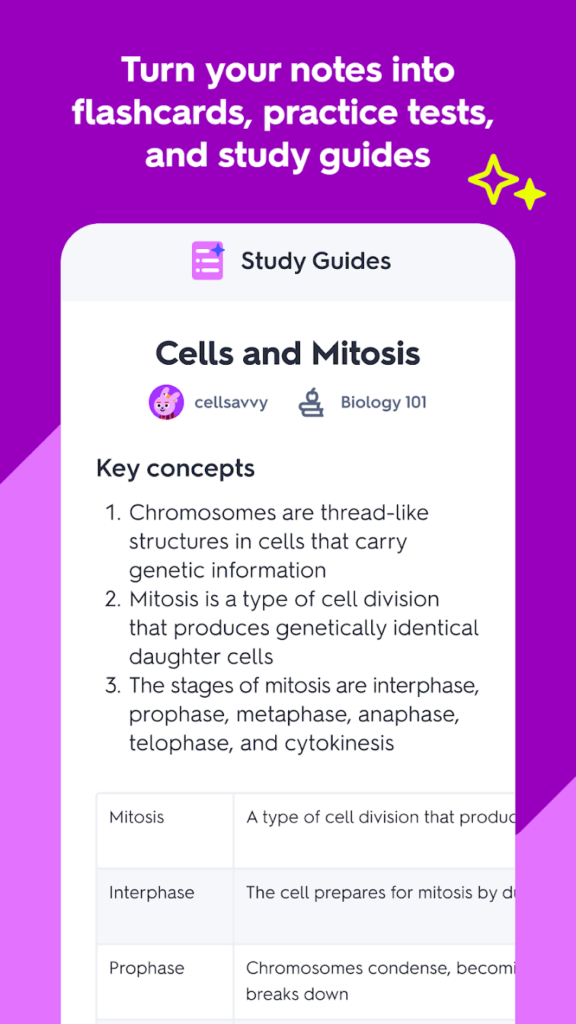
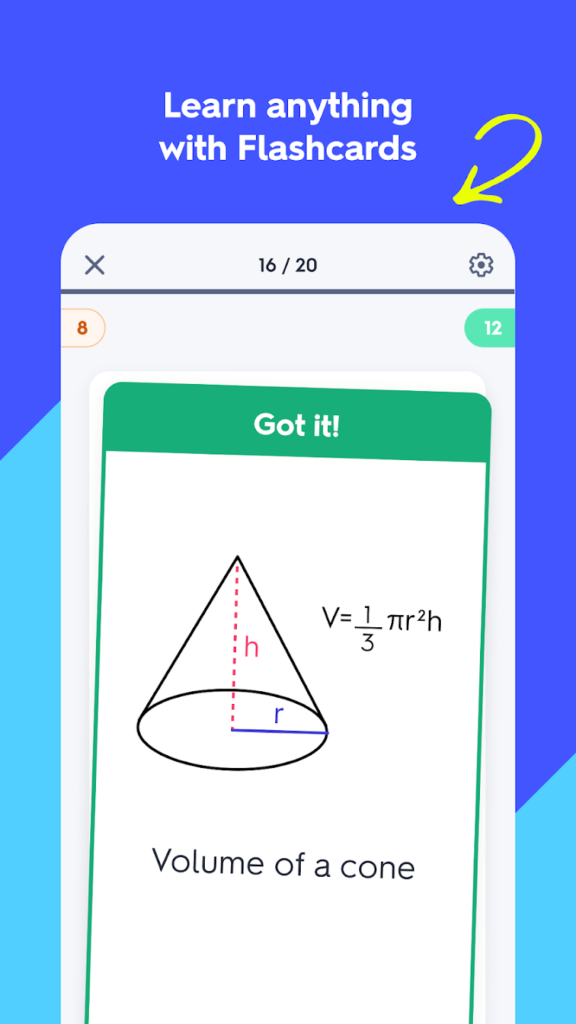
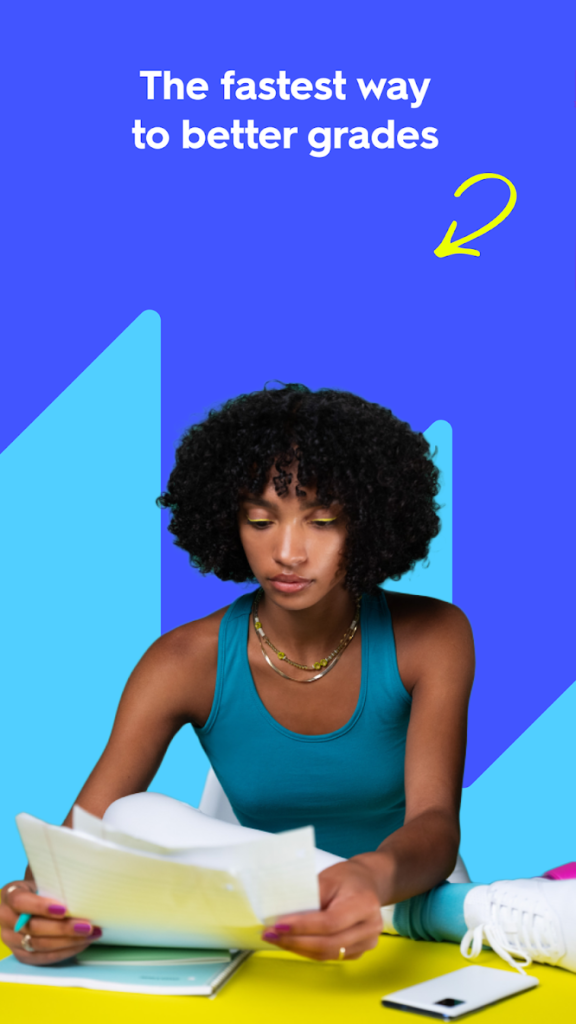
Key Highlights:
- Create custom flashcards or use pre-made sets
- Practice with different question types (multiple-choice, written, etc.)
- Personalized quizzes and test simulations
- AI-powered homework help and expert solutions for difficult subjects
- Offline access and ad-free experience with Quizlet Plus
Who it’s best for:
- Students preparing for exams like SAT, IELTS, and TOEFL
- Individuals who prefer interactive learning through flashcards
- Anyone needing an easy-to-use, portable study tool
- Teachers and students who wish to share study materials
Contact Information:
- App store: apps.apple.com/us/app/quizlet-study-with-flashcards
- Google Play: play.google.com/store/apps
- Website: quizlet.com
- Tik-Tok: www.tiktok.com/@quizlet
- Twitter: x.com/quizlet
- Facebook: www.facebook.com/quizlet
- Instagram: www.instagram.com/quizlet
- YouTube: www.youtube.com/channel/UCV
- LinkedIn: www.linkedin.com/company/quizlet
Conclusion
In today’s digital age, educational apps offer a convenient and effective way to enhance learning. From interactive flashcards to creative mind mapping, these apps cater to a variety of learning styles and subjects, making it easier for students of all ages to stay engaged and organized. Whether you’re studying for an exam, improving your language skills, or exploring new subjects, there’s an app designed to fit your needs. With so many options available, it’s clear that the right educational app can significantly improve how we approach learning, making it more accessible, enjoyable, and efficient.
